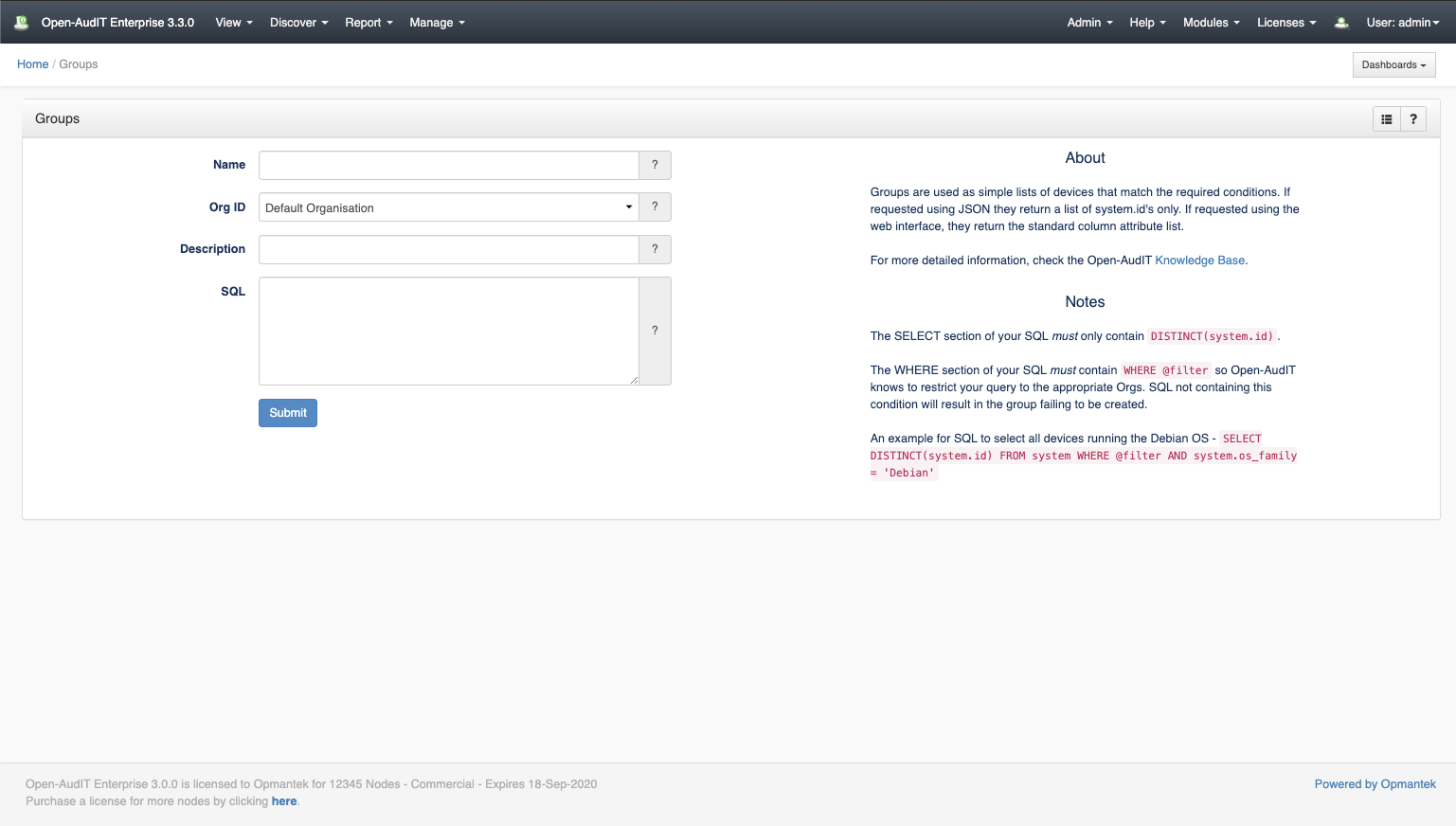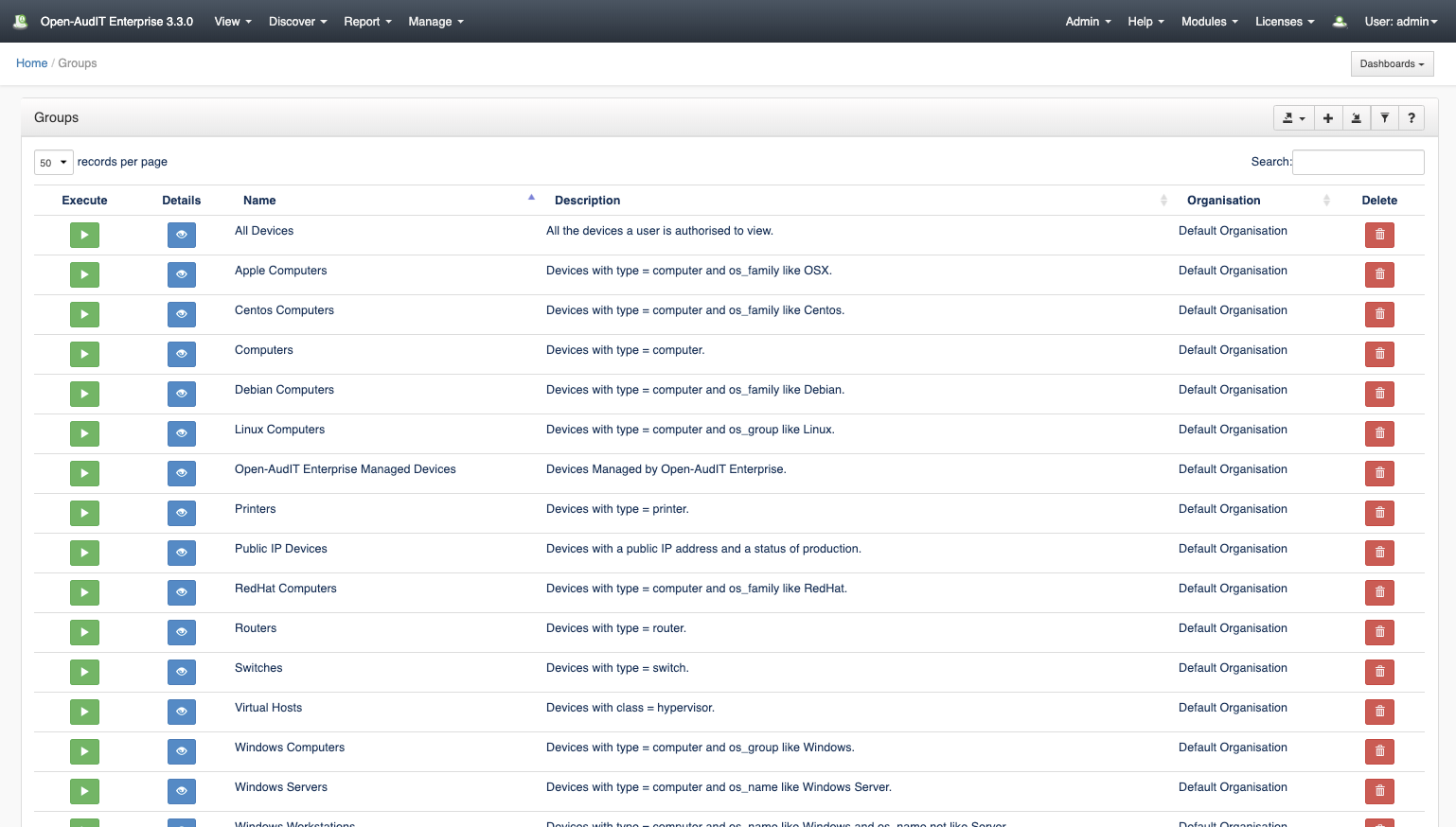Introduction
As at Open-AudIT 2.0 we have changed the way Groups are used within Open-AudIT. Groups used to be the way to assign a user rights to devices. A user had a level of access to a group (or groups). This is no longer the case.
As at Open-AudIT 2.0, users are assigned a role (or roles) and access is based upon the organisations a user has access to. Groups are used mainly for reporting convenience and Baselines within Open-AudIT Enterprise.
How Does it Work?
Groups are used as simple lists of devices that match the required conditions. They no longer (as at 2.0) support returning different attribute lists for display. If requested using JSON they return a list of system.id's only. If requested using the web interface, they return the standard column attribute list.
Creating a Group
A group can be created using the web interface if a user has a role that contains the group::create permission. Go to menu: Manage -> Groups -> Create Groups. There is also a create button on the collection page. A user must include the filter clause in the where filter, ie - WHERE @filter. This is required so Open-AudIT can return only those devices a user has access rights to. Examples are on the Help -> Defaults -> Default Groups page (see below).
View Users Details
Go to menu: Manage-> Groups -> List Groups.
Database Schema
The database schema can be found in the application is the user has database::read permission by going to menu: Admin -> Database -> List Tables, then clicking on the details button for the table.
API / Web Access
You can access the collection using the normal Open-AudIT JSON based API. Just like any other collection. Please see The Open-AudIT API documentation for further details.
Default Items
Shipped are a set of default items. These can be found by going to menu: Help → Defaults → Dashboards.


